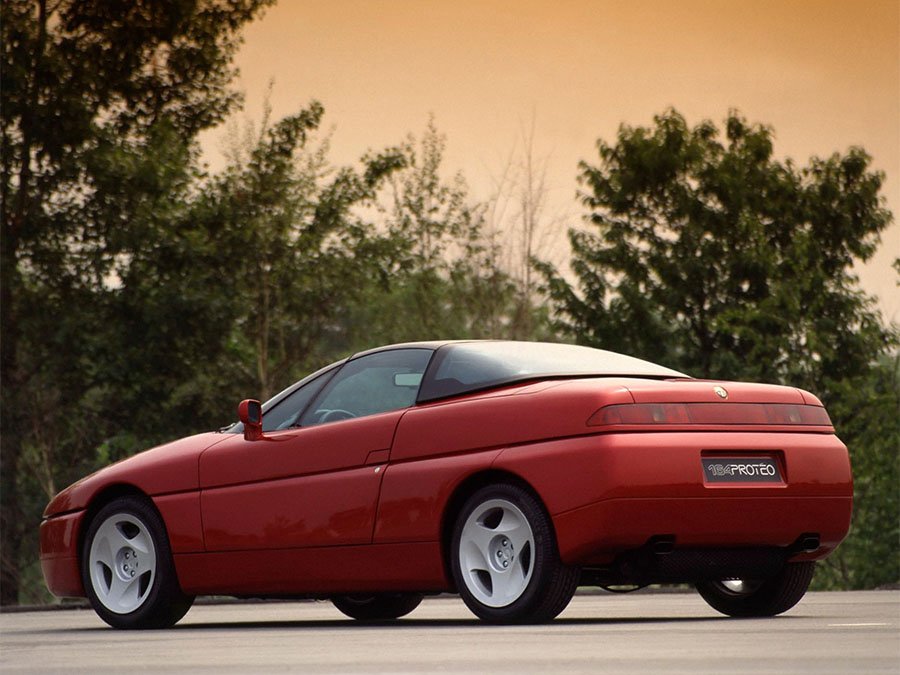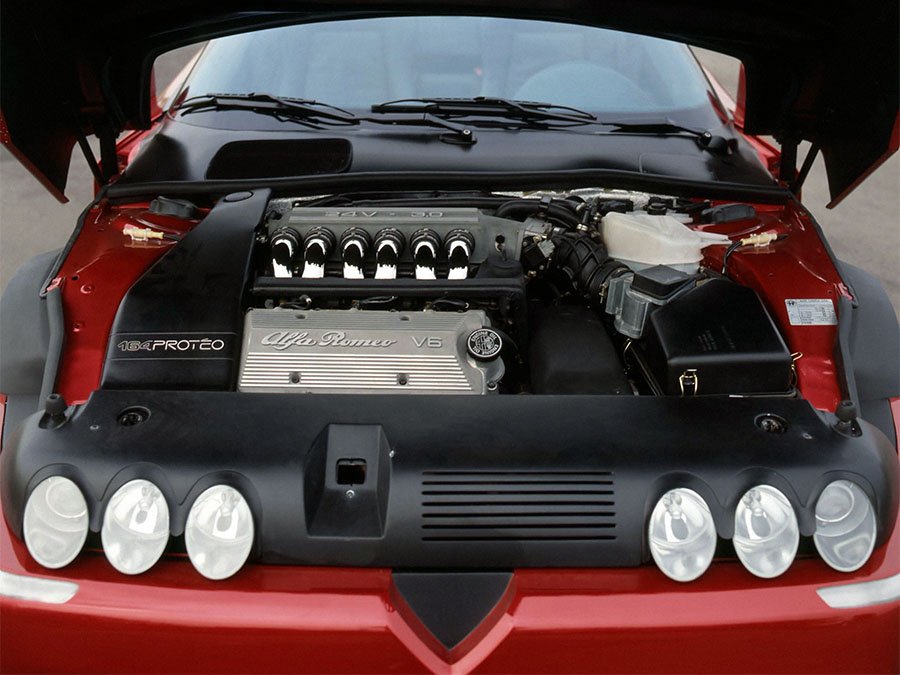Guide: Alfa Romeo Proteo - a Historical & Technical Appraisal
/BACKGROUND
Soon after the SZ had been launched at the Geneva Motor Show in March 1989, Alfa Romeo turned their attention to creating a more conventionally styled flagship that could be sold in greater numbers.
Reaction to the SZ had been extremely positive and, at the time, buyers were queuing up to get their hands on the unusual looking machine that had quickly been dubbed ‘il Mostro’ (the Monster).
The SZ was not the only machine that was getting customers excited. In fact, 1989 turned out to be the last full year of a collectable and exotic car boom that had fuelled some extraordinary price rises in a very short space of time.
The market had steadily been ticking upwards for several years, but following the stock market crash of 1987, investors flocked to alternative assets and certain types of car became that must-have high yielding investment.
In its final few months, the boom was fed by a fresh influx of money from Japan that resulted in some vehicles being sold for multiples of their original list price. High end classics like the Bugatti Royale and Ferrari 250 GTO made headlines around the world as a result of some record busting auction prices.
It was in the midst of this red hot market that Alfa’s management sanctioned the development of a high performance two-seat sports car packed with advanced features.
Most spectacular of these was a retractable hard top that, at the touch of the button, would convert the car from a Coupe to Spider. Other novel technical details included four-wheel drive and four-wheel steering.
In light of its advanced roof system, the new car was named Proteo. It was a reference to the Latin phrase ‘protean’ which expresses the ability to change shape quickly and easily.
The Proteo was built in collaboration with Turin prototype and concept car specialist, Stola. It was unveiled two years after the SZ at the Geneva Motor Show in March 1991.
At this stage, Alfa Romeo intended to build a limited production run of 2000 cars.
CHASSIS
The Proteo’s steel unibody construction was based on a short wheelbase floorpan sourced from the 164 (Alfa’s flagship saloon).
Suspension comprised MacPherson struts up front and a multi-link arrangement at the rear. Electronically-controlled dampers gave the driver a choice of settings depending upon road conditions and driving style. Anti-roll bars were fitted at either end.
Power-assisted four-wheel steering aided low-speed manoeuvrability and high-speed stability; the rear wheels could be turned by up to 5° in either direction.
Drilled and ventilated brake discs were installed at each corner. The latest generation ABS was also fitted.
Forged three-spoke alloy wheels were mounted on five stud fixings.
To give the best possible weight distribution, a fuel tank was located in the trunk floor.
ENGINE / TRANSMISSION
In the engine bay was the first publicly revealed prototype of Alfa Romeo’s forthcoming dual overhead camshaft 24 valve 60° V6.
Like the other three-litre engines in Alfa’s range, the all-alloy power unit fitted to the Proteo displaced 2959cc thanks to a bore and stroke of 93mm and 72.6mm respectively. It was transversely mounted, used a wet-sump lubrication system and Bosch Motronic engine management.
Alfa Romeo claimed a power output of 260bhp, but no torque figure was ever published nor was a compression ratio.
For comparison, like the SZ, the range-topping 164 of the time used a single overhead camshaft per bank and two valve per cylinder arrangement. Peak output was 210bhp at 6200rpm and 181lb-ft at 4500rpm.
Transmission was through a five-speed manual gearbox and permanent Viscomatic four-wheel drive system. This used a Ferguson-type viscous coupling that automatically split the torque between the axles depending on conditions.
BODYWORK
Aside from its headline-grabbing roof system, the Proteo incorporated several other interesting design features.
It was designed at Centro Stile Alfa, but adopted an array of details that company insiders had seen on Pininfarina’s initial renderings for the delayed 916 Spider / GTV that would eventually make it into production in 1993.
Most obvious of these was the bank of three circular headlights per side that projected through a trio of portholes on each side of the hood. There was also a steeply raked swage line that accentuated the car’s soft wedge profile.
Flexible polyurethane aprons meant the designers were able to do without conventional bumpers. Composite material was also used for the rest of the body panels.
Undoubtedly the Proteo’s party piece was its state-of-the-art roof. It had a rear deck panel that rose up and slid backwards which opened up a recess for the curved rear window and central roof panel to drop into. The rear deck panel then slid back into place to give a roadster-like appearance with no visible evidence of the roof remaining.
Another interesting aspect of the roof was its ability to increase or restrict the amount of sunlight that beamed into the cockpit. Developed in conjunction with PPG, it featured a layer between the glass panels that, when electrically charged, would stimulate a chemical reaction that increased or reduced its transparency.
INTERIOR
The elegantly styled interior fused a mix of classic and modern details and was loaded with equipment.
Leather was used to upholster practically every non-carpeted surface to include the dash, centre console, gear lever, gear gaiter, steering wheel rim, door panels and A pillars.
Heavily bolstered sports seats came with electric adjustment and handsome ribbed centres to match the door panels. Also housed in the doors were tiny audio speakers by the grab handles.
In the absence of a conventional ventilation system, fresh air was fed to the upper portion of the cabin through the perforated top section of the dash.
Directly behind the three-spoke steering wheel was a curved binnacle that housed a large 280kmh speedometer and 8000rpm rev counter. These were flanked to the left by a fuel gauge and to the right by a water temperature gauge.
At the top of the centre console were another three read outs (for oil pressure, oil temperature and battery condition). Underneath were three rows of touch-sensitive switches (24 in total) and a CD player.
Electric windows and electric mirrors were also fitted.
WEIGHT / PERFORMANCE
Alfa Romeo claimed the Proteo weighed 1467kg.
Quoted performance figures were a top speed of 155mph and 0-62mph time of 5.5 seconds.
SUBSEQUENT HISTORY
Once the prototype was up and running, Alfa executives commissioned three more to serve as development mules.
However, soon afterwards the order was canned. By 1991, the global economy had turned sour and the number of buyers for cars like the Proteo had shrunk massively.
The solitary Proteo was retained by Alfa Romeo for their factory museum in Arese.
Its distinctive dark red metallic colour (dubbed Rosso Proteo) subsequently became an option on other Alfas for years to come.
Text copyright: Supercar Nostalgia
Photo copyright: Alfa Romeo - https://www.alfaromeo.com






































